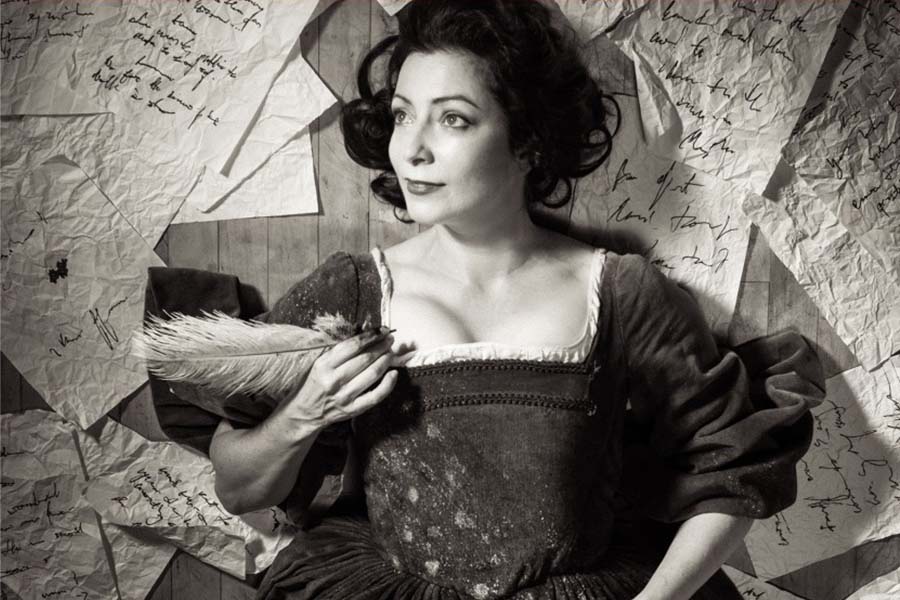When it comes to the status of female playwrights in the American theatre, the long arc of history is bending toward parity—but so slowly, almost imperceptibly, that you’d be forgiven for despairing.
We’ve done a lot of reporting on the gender gap in playwriting and the efforts to counter it, including a whole special issue on the subject in 2015, which could be seen as our own effort to counter it—to shout as loud as we could the obvious truth that women write plays as well as men do, and that the disparity in productions their works receive is neither meritocratic nor accidental but is another byproduct of centuries of patriarchal bias, both conscious and unconscious.
That year we decided to use the same data set with which we calculate the Top 10 Most-Produced Plays and Top 20 Most-Produced Playwrights—the season plans of all TCG member theatres—to take a statistical snapshot of exactly where American theatre stood on gender parity. And to correct for historical biases that might skew these numbers and fail to reflect changes in the current new-play talent pool, we decided to break out those plays by era.
The results the first year weren’t encouraging: We found that just 21 percent of plays in the 2015-16 season had female authors, with 67 percent written by men and 12 percent having been co-authored by writers of both genders. We also discovered that the number of productions of new plays trounced both those for classics and revivals (see below for how we define these three categories), and that among new plays the gender count was slightly better: 29 percent authored by women, 59 percent by men, 12 percent co-written.
In 2016, we were slightly encouraged to see the top-line number jump to 26 percent female-authored plays, with 63 percent by men and 12 percent co-written. The new-play number inched forward too, to 32 percent female-authored, 55 percent male-authored and 12 percent co-written.
This year, though, only the new-play number budged. The overall number, as you can see below, stayed stubbornly on par with last year at 26 percent female-authored works, with 62 percent by men and 11 percent co-written.
Meanwhile, as you can see, the new-play figure for female playwrights ticked up to 36 percent, versus 53 percent by men and 11 percent co-written.
These last stats can be spun positively: In the new-play world, male playwrights are down to just nearly half of all production credits, with women slowly but surely catching up. The glass-half-empty take, though, is that at this rate we won’t see gender parity (or women cracking the 50-percent ceiling, at least) in the new-play sector until roughly 2021.
We’ll take some succor in the realization that for all their supposed Shakespeare-centrism and classical conservatism, American theatres are unambiguously new-play champions. And the gender-parity trend line among new plays is unmistakably pointing in a positive direction. It is all too true that this list of the top 20 most-produced playwrights in the coming season doesn’t have great overall parity percentages. But look at the top five and you might glimpse the future: all living writers, three of them women.
Still, if you were looking for a classic illustration of the maddening axiom that change comes slowly, look no further.
METRICS: To compile these charts, this year we employed a crack volunteer crew, including Marisa Andrews, Travis Bedard, Annika Bennett, Kayla Kaufman, Porsche McGovern, Jerald Pierce, and Mariah Schultz. We pored over the same data set as we did for our Top 10 Plays and Top 20 Playwrights lists: 1,917 productions from 380 TCG member theatres scheduled between the dates of Sept. 1, 2017, and Aug. 31, 2018. We defined “production” as anything with at least a week’s run, and we excluded improv shows, readings, cabarets, and festivals.
We counted each production in two categories: gender (male, female, and genderqueer) and era (new play, revival, classic). We considered plays that premiered between 2007 and now to be “new,” and a “revival” as a show whose first production took place between 1967 and 2006. Anything predating 1967 we’ve considered a canonical work, or a “classic.”
We also distinguished gender from era: Any work with more than one credited author, including an adaptor or translator, of different genders was considered “co-written” in our gender tally. This would apply equally to In the Heights (Lin-Manuel Miranda, Quiara Alegría Hudes) and to Annie Baker’s adaptation of Chekhov’s Uncle Vanya.
But for the era breakdown, we did not consider a work like Baker’s Vanya to be a contemporary/classic hybrid. Instead, for the purposes of counting the play’s period, we would call it a classic, straight up—not least because Chekhov’s title is unchanged and his name comes first, signals that while this may be Baker’s “take” on the original it can’t really be counted as a brand-new play. Aaron Posner’s Life Sucks, on the other hand, would count as a new play; though inspired by Uncle Vanya, the title and credit order tell us it’s Posner’s, and it’s new. (Same with Branden Jacobs-Jenkins’s An Octoroon, and so on.)
We took a similar approach with plays adapted from non-dramatic sources, like films or books (from stage versions of Pride and Prejudice, say, to the innumerable adaptations of A Christmas Carol), and with adaptations of any source into a musical: We considered the debut of the stage version to be the material’s origin date. And, to bring things full circle, in all these cases we considered the genders of adaptors or co-writers, if they were mixed, to make these productions “co-written.”



